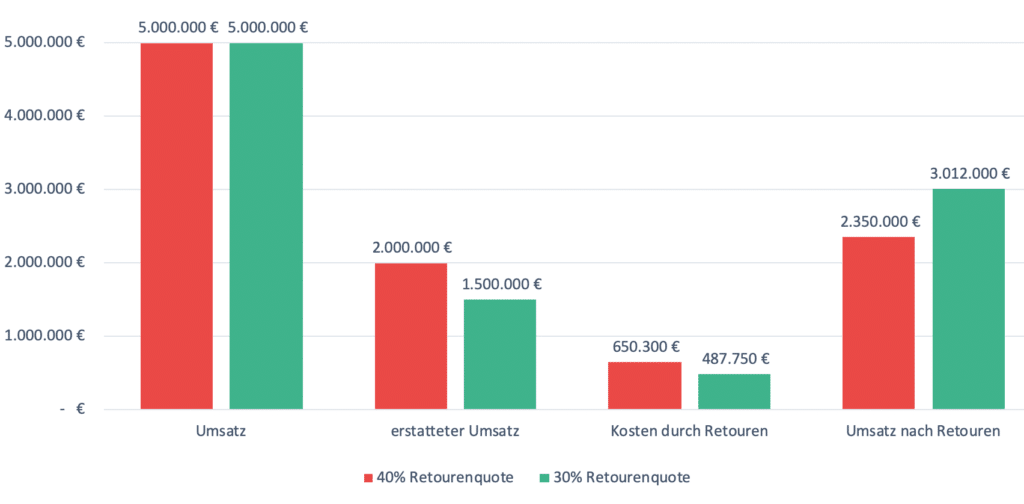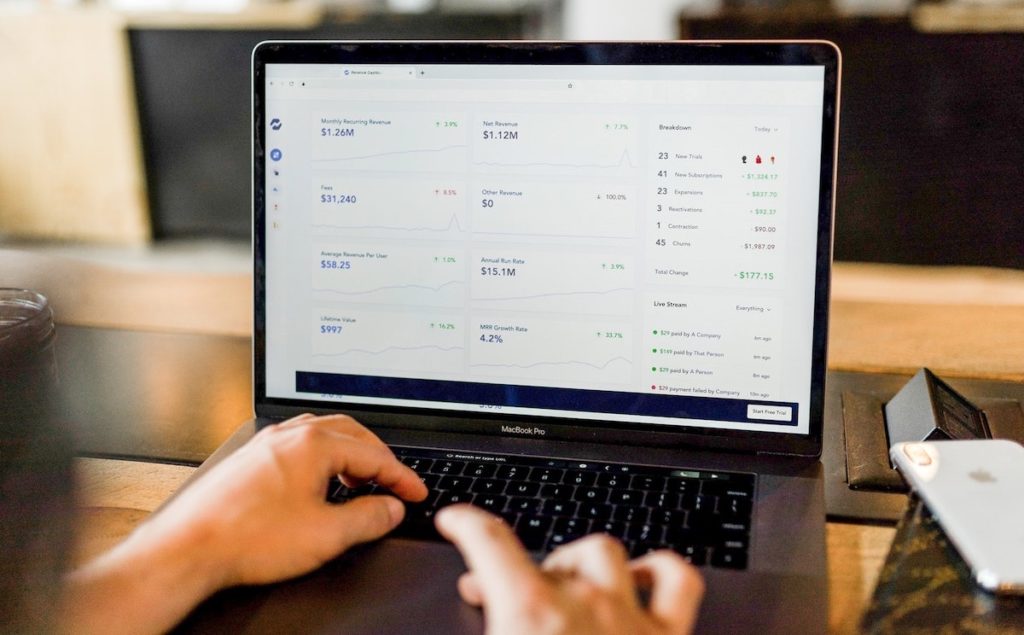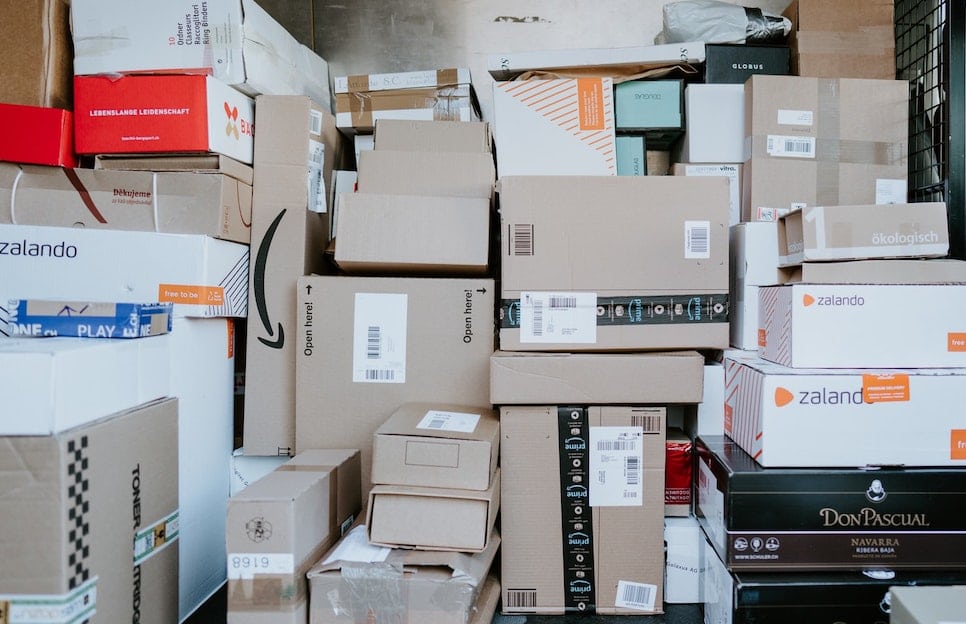Reward systems for more profit, lower costs and more sustainable customer behavior
Nearly every online store operator strives to optimize its conversion rate and checkout process. But is the “pre-sale-optimization approach” really the best approach for more sales and profit? In this guest article by Daniel Engelhardt, Co-Founder of keepist.de, you will learn how reward and loyalty programs with your existing customers can not only increase your sales but also reduce your costs and thus generate more profit.
Selling at any price
Our social media feeds are flooded with ads like the oceans are flooded with plastic garbage. It feels like every second picture on Instagram is “sponsored” and therefore with advertising background. And if it’s not an ad, then a picture is a “paid partnership” of a so-called influencer. New dress here, new make-up there. The reason is clear: Everyone wants to sell. More. More and more. The turnover should increase, because more turnover means more profit at a roughly constant conversion rate.
The current strategy of most online retailers is almost always the same: Ads, ads, ads. Quickly acquire many new customers and increase sales with comparatively little personnel effort.
The only well-known problem is: Our attention is limited and all retailers are fighting for the same, scarce consumer attention of the customers – and this is just 0.3 seconds in the online area. At the same time, a large number of providers – whether with a similar or completely different range – advertise for the same customers. The result: rising CPCs (costs per click), i.e. generally rising customer acquisition costs for all providers. The winners are mostly advertising platforms such as Facebook, Google and others.
After the purchase: the return
Of course, more customers also mean more sales. But does more sales actually mean better results? Of course not, because the costs are also increasing. And after the purchase? Then it comes: the return: “I don’t like it”, “Not as shown”, “Does not fit” … In addition to marketing costs, returns are certainly one of the biggest cost drivers in e-commerce. A return costs the retailer an average of € 19.51. With 280 million parcel returns per year, over five billion euros are incurred annually. In addition, returns pollute the environment with 238,000 tons of CO2 equivalents every year. This corresponds roughly to the environmental impact of 2,200 daily car journeys from Hamburg to Moscow (source).
And all because what was bought wasn’t delivered, because what many often forget: Customers don’t buy the product in the online shop, they buy the product that arrives at home.
But why – when we know all that – do shop operators decide to drive up marketing costs when the profit increases proportionally but only slightly? In addition to reasons such as displacement of competition and increasing brand awareness of large players, there are other reasons: Because it is simple, quick, comprehensible and measurable and ultimately requires comparatively little personnel effort.
Optimization of pre-sales activities with a focus on after-sales optimization – Wait! What ?!
Logically, sales are the focus of many shop operators, because sales generate sales. It is therefore not surprising that much is being done to make the deal as easy as possible for the customer. We at keepist speak internally in this context of the “sale at any price”. But you quickly forget that there is also a huge potential for profit maximization in after-sales, which is only rarely used (At this point, after-sales does not mean the purchase process such as payment and shipping, but rather what a shop operator can do so that the turnover made remains turnover and does not have to be reimbursed). Let’s stay with the topic of returns. The return rate of fashion shops in e-commerce averages just under 40%.
This means that 40% of the turnover must be reimbursed and there are also costs for returns handling, reprocessing, depreciation or even sorting out due to damage. The following situation arises – roughly estimated:
Shop X makes € 5 million in sales (= sales that are not adjusted for returns) per year. With an average shopping cart of around € 60, this corresponds to a little over 83,333 orders. The return rate is 40%.
40% of 5 million = 2 million €
40% of 83,333 pieces = 33,333 pieces.
Per returned parcel costs of average € 19.51.
€ 5,000,000 in sales
-2,000,000 € reimbursed sales (40%)
-650,300 € costs due to returns (33,333 * 12 €)
= € 2,350,000 turnover (= adjusted for returns), after returns
(Values rounded)
→ 50% of the sales achieved are offset by returns alone.
If you lower the return quota by only 10 percentage points to around 30%, the following calculation results
30% of 5 million = 1.5 million €
30% of 83,333 pieces = 25,000 pieces.
€ 5,000,000 in sales
-1,500,000 € reimbursed sales (30%)
-487,750 € costs due to returns
= € 3,012,000 turnover, after returns
(Values rounded)
Reducing the return rate by only 10 percentage points from 40% to 30% results in an increase (EBIT) of € 662,000 (almost 30%) per year for the shop.

The individual facets of the cost and sales structure of a shop are certainly much more complex than shown here, but the invoice shows very impressively the enormous potential of after-sales-related topics – here specifically in returns.
Reward systems: That little extra with a big effect for more profit and happier customers
In order to reduce the number of returns, there is – as is so often the case – not one right way and certainly not a one switch that you can flip to have fewer returns at short notice. There are countless adjusting screws and levers that you can adjust in your own online shop to reduce the flood of returns. However, it is important to note that returns are a complex topic and the adjusting screws may vary. can differentiate from shop to shop. A major lever is, for example, the product presentation or description. Since when shopping online, compared to offline shopping, only our visual sense is available to evaluate a product, the product presentation must be so good that the lack of the remaining four sensory perceptions does not have a major impact on the purchase decision.
At keepist, we offer online shop operators an additional option that would be far too inefficient if every shop were to implement it themselves: data-driven return avoidance in conjunction with a loyalty/reward system. We essentially follow two approaches:
1. Rewarding the end customer: The customer is rewarded if he keeps ordered goods. This reward has two effects:
- Customer satisfaction increases because as a customer you get something extra on top for free. This in turn increases customer loyalty, because what you have received once, you want to have again the next time.
- Low-return behavior is encouraged. The reward gives the customer a positive experience (so-called positive reinforcement). Behavior he has shown is rewarded. This positive reinforcement encourages him to do the same behavior again if he wants the reward again.
These two effects increase customer satisfaction enormously and the customer will have a positive memory of the shopping experience and the shop and will most likely buy there again – since at least since Miles & More and Payback, everyone knows how much people all over the world enjoy this Love collecting points.
The reward system also creates a very high-quality database that is necessary for the second approach.
2. Data analysis to optimize the shop: With the help of artificial intelligence, patterns can be recognized that provide information on why there is an increased number of returns, which products are returned particularly frequently and why and much more. From this, specific recommendations for action can be derived on how the shop can be optimized for fewer returns.
The advantages for shops are obvious:
- Satisfied and loyal customers through exclusive added value
- More sustainable shopping experience for customers
- Less costs, more sales, more profit
Before we recommend the use of a reward system, however, we carry out a returns analysis of the shop in order to uncover unused potential. We carry out this analysis without any commissioning and without any obligation and free of charge, all that is required is an email to daniel@keepist.de.
Conclusion
Conversion optimization and sales promotion are not necessarily the holy grail for a better annual result. There is also great potential in the after-sale, which particularly refers to returns. By influencing both sales and costs, returns represent a double lever that can be used to optimize the shop’s profit. However, returns are a complex issue and it is, therefore, advisable to work with a partner who deals with returns on a daily basis and who has made it their task to reduce them. A free returns analysis of a shop can reveal the first potential. By using a reward system in conjunction with data analysis, returns can be avoided in the long term, costs can be saved and sales increased – all with the existing customers.
Author profile:
Daniel Engelhardt deals daily with the topic of e-commerce and returns. At keepist he is CTO and responsible for all aspects concerning the development of the loyalty system and the IT infrastructure. He publishes his learnings regarding returns, e-commerce and tech in the blog on keepist.de and on LinkedIn.


